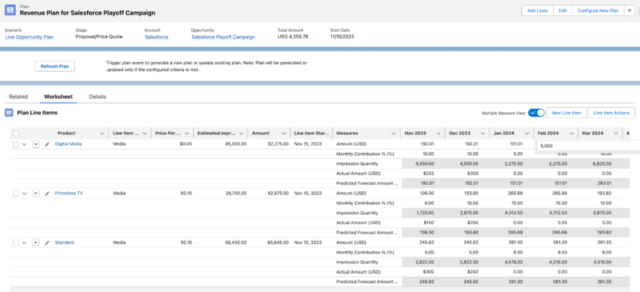What is Out-of-Home Advertising?
Out-of-home (OOH) advertising encompasses any promotional material found outside of a consumer’s home. This traditional form of advertising includes a variety of formats from the towering billboards along highways to the more subtle benches and kiosks at malls. Each element is designed to capture the attention of potential customers as they move through their daily routines.
Types of Out-of-Home Advertising
OOH advertising can be seen in multiple forms, each offering unique benefits and reaching audiences in different contexts:
- Billboards: Large-scale ads seen along roadways.
- Mall kiosks: Interactive centers in shopping areas.
- Charging stations: Ads placed where consumers charge electronic devices.
- Buses and Taxis: Moving advertisements that travel the city.
- Posters and Street Furniture: Smaller ads in urban settings.
- Transit Locations: Ads in metros, tubes, and airports.
The State of Out-of-Home Advertising in 2024
Out-of-home (OOH) advertising continues to carve out a significant niche in the global advertising market. By 2024, the OOH advertising sector is projected to reach a robust $39.26 billion, underscoring its enduring appeal and effectiveness in a digital age.
Market Overview
The backbone of this sector remains traditional out-of-home advertising, which is expected to command a market volume of $20.62 billion in 2024. This segment includes billboards, transit advertisements, and street furniture, which continue to be effective at capturing the public’s attention.
Global Leadership in OOH Advertising
When comparing globally, China emerges as a leader in OOH ad spending, with a projected spend of US$9,736.00 million in 2024. This highlights the strategic importance of OOH advertising in urban and densely populated areas within Asia, where this medium performs well due to high traffic and urban congestion.
Per Capita Spending
On a per capita basis, the average ad spending in the OOH advertising market is expected to amount to US$5.07 in 2024. This figure reflects the widespread utilization of OOH advertising across different regions, catering to a diverse audience outside their homes.
The Shift Towards Interactive Campaigns
Amidst ongoing digital advancements, there’s a noticeable shift in the OOH advertising domain towards more interactive and campaigns. Marketers are increasingly leveraging technology to create more engaging and personalized advertising experiences. This trend points towards a fusion of traditional advertising methods with modern technology to maximize consumer engagement and measure the effectiveness of marketing efforts more accurately.
Challenges for OOH Companies in 2024
Despite its promising future, OOH advertising companies face numerous challenges going into 2024:
- Infrastructure and Technological Investment: Out-of-home (OOH) advertising necessitates continual investments in infrastructure and technology, such as digital displays, network connectivity, and content management systems. Ensuring the reliability, scalability, and performance of digital out-of-home (DOOH) networks is operationally challenging.
- Measurement and Attribution: Accurately tracking and measuring the performance of OOH campaigns to determine their return on investment (ROI) and impact on consumer behavior poses significant challenges for advertisers.
- Integration with Digital Platforms: Effectively integrating DOOH advertising into the broader digital landscape, which includes online/mobile channels and your CRM, requires overcoming hurdles related to data integration, cross-channel targeting, and providing seamless user experiences.
- Revenue Forecasting: Revenue forecasting for out-of-home (OOH) advertising companies is fraught with challenges due to economic fluctuations, technological disruptions, and shifts in consumer behaviors. These factors, combined with local regulations and competitive market dynamics, make it difficult to predict OOH revenues accurately. Companies must employ sophisticated forecasting techniques that incorporate real-time data, trend analysis, and scenario planning to navigate these complexities effectively and predict future revenues with a reasonable degree of accuracy.
Forecasting for OOH Companies
One of the key aspects of managing OOH advertising campaigns is effective revenue forecasting and budget management. Tools like revVana are essential in this area. revVana helps companies forecast revenue, update budgets, manage renewals, and optimize spending throughout the campaign lifecycle by incorporating real-time data, trend analysis, and scenario planning.
For example, if a client invests $100,000 in an OOH campaign, revVana can track how this budget is spent over time, predict future expenses, and indicate when campaigns should be renewed or adjusted, all inside of Salesforce. This not only ensures financial efficiency but also enhances the strategic deployment of marketing resources.

The future of OOH advertising looks promising with a continued focus on innovation and interactivity. As advertisers seek to make a lasting impression in the physical world, the integration of data analytics and digital tools with traditional advertising forms a powerful strategy to engage consumers in meaningful and memorable ways. In 2024 and beyond, we can expect OOH advertising to not only persist but thrive as a critical component of comprehensive marketing campaigns. With the right strategies and tools like revVana, OOH companies can precisely track and forecast their success, ensuring that every dollar spent is an investment towards measurable growth.






